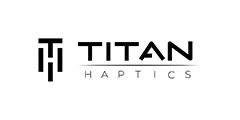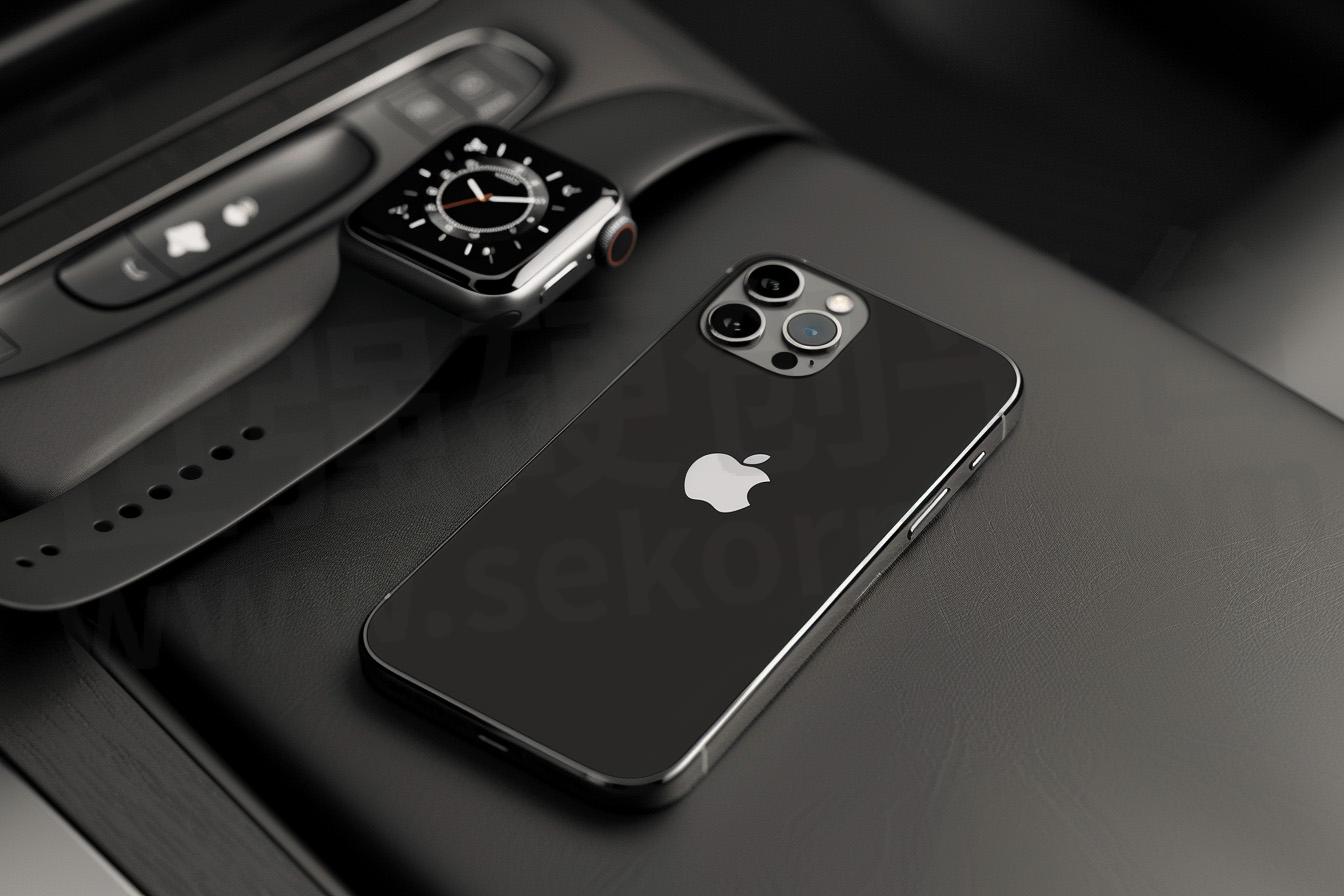The Power of Touch and How Six Companies Use Haptics to Innovate


Ever since haptics emerged on the technology scene, companies have utilized it to elevate their products, offering a new dimension to human-computer interaction and expanding the horizons of user experience. Haptics can indeed be a game changer as the effective use of tactile feedback can enhance a product’s value. On the other hand, improper implementation can negatively impact user experience, customer satisfaction, and consequently, sales.
Below, we explore how six companies successfully use haptics to elevate their products.
1. Future Proofing – Apple’s Taptic Engine
Perhaps one of the most prominent
companies at the forefront of integrating haptics into its devices is
Apple. Apple’s most notable use of haptics is the ‘Taptic Engine’ on
iPhones, which provides users with tactile feedback that mimics the
sensation of pressing a physical button. When a user performs certain
actions, such as pressing the home button or receiving a notification,
the Taptic Engine generates a small vibration.
The strategic integration of its own
proprietary haptic technology has allowed Apple to stay ahead of the
competition and future-proof their products (IFixit).
This small yet significant addition has not only enhanced the user
experience by making it more immersive, interactive, and accessible, but
it also provides Apple with the flexibility to adapt the Taptic
Engine’s functionality according to evolving user needs and
expectations.
Over the years, Apple has continuously invested in updating and improving the Taptic Engine, illustrating their commitment to staying at the forefront of the industry. And as the future continues trending towards more digital experiences, Apple’s devices still maintain their relevance and market share due to their early adoption of touch feedback, including their most recent announcement – next generation haptics-enabled Pencil (Ars Technica).
2. Enhanced Brand Perception – Sony’s PlayStation 5
Sony is another company that
successfully leveraged haptics to not only provide an immersive user
experience and elevate its brand.
When the PlayStation 5 (PS5) was
released in 2020, it quickly sold out across the globe—in part due to
its highly-anticipated cutting-edge specs, but also due to their new
DualSense controllers. These native PS5 controllers provided users with
seamless next-generation haptics and adaptive trigger resistance,
allowing users a tactile experience that closely matched the in-game
activities. For instance, if a player is drawing a bow in a game, the
triggers will offer more resistance, mimicking the tension one would
feel in real life. Additionally, the haptic feedback is capable of
producing a wide range of vibrations, from soft, rapid vibrations to
mimic the sensation of raindrops hitting the ground, or a stronger,
slower rumble to simulate the impact of an explosion (PlayStation Blog).
Sony’s commitment to leveraging advanced technology to enhance the gaming experience has not only solidified its position as a technology leader in the industry, but also sends a clear message to consumers about its dedication to delivering high-quality, innovative products. Recent product releases like the PSRV2 and the PlayStation Portal were met with acclaim, with the PSVR2 being lauded as one of the best VR headsets released in 2023 and the PlayStation Portal selling out upon its release (TITAN HAPTICS) (True Trophies). The reception to these products proves that Sony’s strategic approach has successfully elevated their brand, making their name synonymous with quality and technological excellence.
3. Enhanced User Experience – Nintendo’s N64 RumblePak and The Nintendo Switch
Since the original RumblePak for the
Nintendo 64 was released in 1997, Nintendo has been making continuous
strides to elevate user experience by improving the haptic feedback in
its consoles. The RumblePak, at the time, was a groundbreaking
innovation—it was a separate unit that could be attached to the bottom
of the N64 controller in the memory card slot and provided users with an
additional layer of immersion to heighten the gaming experience. It was
incredibly well received, and laid the groundwork for the now
industry-standard gaming controller rumble (Nintendo Life).
Despite the considerable advancements
in gaming technology since the RumblePak, Nintendo remains committed to
pushing the boundaries of user immersion. A prime example of this
commitment is the Nintendo Switch’s ‘HD Rumble’ feature, integrated into
its Joy-con controllers. This feature enables the system to mimic
highly specific sensations, such as the shaking of ice cubes in a glass (video).
The Nintendo Switch is the 2nd best-selling handheld video game console of all time, selling over 126M (Statista). This is in part due to Nintendo’s ongoing efforts to use haptics to bridge the gap between the user and the digital world, which thereby increases user satisfaction and player engagement.
4. Product Differentiation – Jaguar Land Rover’s Range Rover Sport SV Edition
In the highly competitive automotive
industry, car manufacturers are perpetually seeking innovative ways to
distinguish their products and carve out a unique niche in the market.
One way luxury car manufacturer Jaguar Land Rover decided to do this was
incorporate haptic technology into their car seats, in an entirely new
way.
Designed in tandem with Canadian company Subpac, the new Range Rover Sport SV Edition One offers 4D Immersion with their Body and Soul Seat (BASS). The BASS seats use transducers to provide haptic feedback in response to lower frequencies of music, allowing users to “feel the music” as they drive.
The benefits of this technology extend beyond mere experiential enhancements. Both Jaguar Land Rover and Subpac claim that these vibrations can improve your health by promoting relaxation, reducing stress, and increasing heart rate variability. They also claim that on a longer drive, these pulses dramatically improve driver fatigue (Forbes) (Health And Bass).
The Range Rover Sport SV Edition One
car immediately sold out within its first year of release, partly due to
the BASS seats Jaguar Land Rover implemented into the car seats (Yahoo).
One thing is clear, just by integrating haptics, Jaguar Land Rover has
successfully differentiated their product from their other competitors.
5. New Revenue Streams – CJ 4DPLEX and DOLBY’s Motion and Haptic Movie Theater Seats
Cinema has always been in a state of
evolution. The first few films started off as silent and
black-and-white; cinematic evolution saw the introduction of color and
sound, transforming the silent, monochromatic movies into vibrant,
audible experiences. Nowadays, we’re regularly exposed to 4K visuals and
THX surround sound audio, transforming movies into an immersive,
larger-than-life experience.
However, the evolution doesn’t end there. Companies like CJ4DPLEX and Dolby have helped push the way for 4D by introducing motion and haptic seats (CJ Newsroom) (CNBC). These enhancements offer a new level of sensory experience to movie-goers: the seats move in sync with the action on the screen, while the haptic technology allows users the ability to feel things such as the rumble of the engine during a car chase scene or an explosion during a battlefield scene. This elevates the movie-watching experience, making audiences feel as though they are actually a part of the action.
Motion and haptic movie theater seats are just two examples of how companies can leverage haptics in their products to create new revenue streams. This not only enhances the entertainment value of movie-watching, but provides a premium experience that compels audiences to choose the cinema over home viewing.
6. Customization Opportunities – Google’s Pixel Watch
Google is also another company that
uses haptics to push the boundaries of human-computer interaction. A
recent software update to their Google Pixel watch now enables users to
discern time through haptic feedback. This means that the watch
communicates time through a sequence of vibrations that correspond to
the hours and minutes, eliminating the need for users to even glance at
their wrist (Android Police).
Currently, there are two
vibration patterns: Digits and Terse. The Digits pattern provides a more
detailed time update down to the minute, while the Terse pattern rounds
off the time to the nearest quarter hour. Users can choose between the
patterns and decide which one suits their preferences best. They can
also modify the intensity and speed of the haptic feedback to ensure
they can accurately perceive and interpret the time. This creates a user
experience that can differ from person to person.
This application of haptics
demonstrates the potential for customization opportunities, enabling
companies to develop products that are capable of being tailored to meet
individual customer needs and preferences. The ability to personalize
haptics can lead to a more accessible, satisfying, and personalized user
experience.
Conclusion
These six companies demonstrate
the transformative impact of haptic technology in enhancing user
interfaces and experiences across devices. When done well, haptics can
truly elevate the product, providing premium experiences to customers
and opening companies up to new opportunities for innovation and market
differentiation.
As haptic technology continues to
evolve, it will undoubtedly play a crucial role in the future
development of interactive devices. There
is significant potential for haptic technology to change the way we
interact with our devices, making them more intuitive, immersive, and
user-friendly. Companies that invest in this technology and effectively
integrate it into their products will not only stand out in an
increasingly competitive market but also create a more engaging and
satisfying user experience. This, in turn, can drive customer loyalty,
brand recognition, and ultimately, business growth.
If you’re interested in working with TITAN on your haptic-enabled products, get in touch.
- +1 Like
- Add to Favorites
Recommend
- Understanding Haptics: A Journey through the History and Evolution of Haptic Technology
- Haptic Technology 101: A Beginner’s Guide to the Different Types of Vibration Motors
- Hosiden Signs Development Contract with Ultraleap Limited for Mid-air Haptic Technology
- University Haptic Labs Leading the Way in Haptic Research
- Haptic Motors Clustered Haptic Arrays by TITAN Haptics Clusters Unlock New Possibilities
- Why Haptics? Unveiling the Benefits and Applications of Haptic Technology
- Immersive Insights: Exploring the Future of Haptics at the CHI Conference 2024
- Air Real Reaction Touch Panel DTS5088 Developed by Hosiden Operates with Air-transmitted Haptic Feedback
This document is provided by Sekorm Platform for VIP exclusive service. The copyright is owned by Sekorm. Without authorization, any medias, websites or individual are not allowed to reprint. When authorizing the reprint, the link of www.sekorm.com must be indicated.



























































































































































































































































































































































































































































































































































































































































































































































































































































































